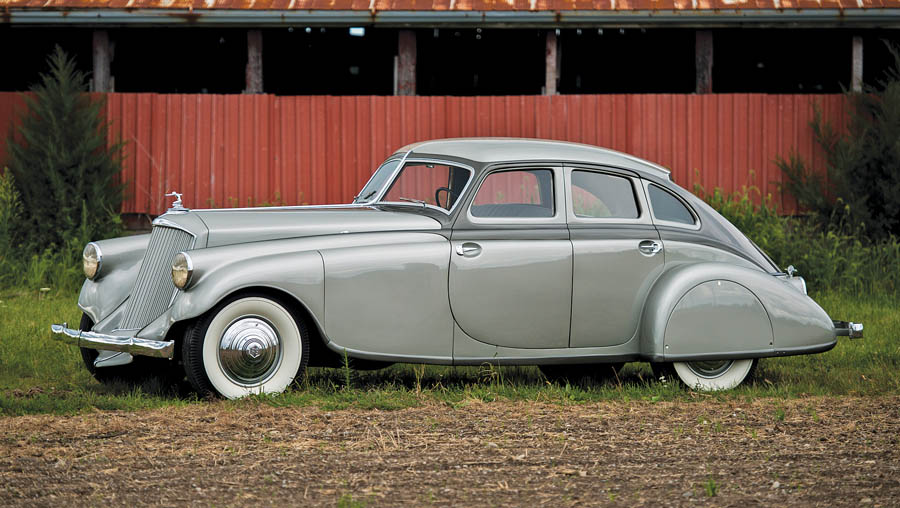Chassis Number: 2575015
This Silver Arrow is recognized as being body number 1, the first Silver Arrow produced, and was used to debut the wild new ideas at East Coast auto shows during 1933, including both New York and Boston. Pierce-Arrow clientele were notoriously conservative and not really the people who bought super-streamlined dream machines — something Pierce-Arrow would realize in the months that followed.
When it came time to disperse the Silver Arrows, one was sold to a flamboyant doctor, and yet another to a Chicago artist — men who enjoyed the attention the car brought them. The same is true of the buyer of this car, M.C. Hudson, the San Francisco distributer of Crazy Water, the famous health-giving mineral water bottled in Texas since 1881. Liveried with Crazy Water logos, the Silver Arrow served to promote the famous miracle cure throughout California.
Not merely an automobile, the Silver Arrow could be considered an Art Moderne monument and a symbol of the streamlined age at its finest and most audacious. Treasured and shown for over two decades but never sold, it was offered with considerable pride in what it has always been, first and foremost: a show stopper.

